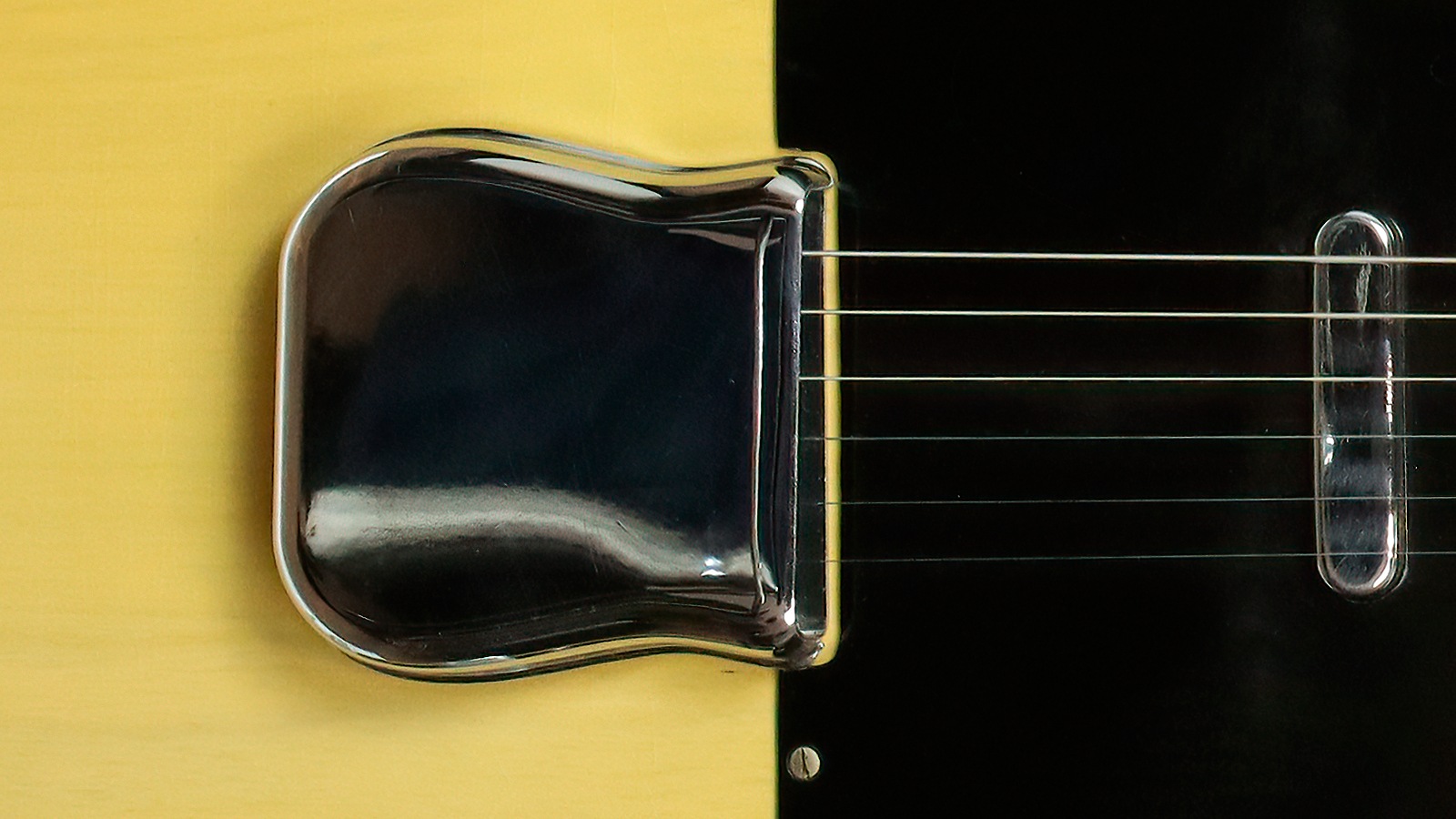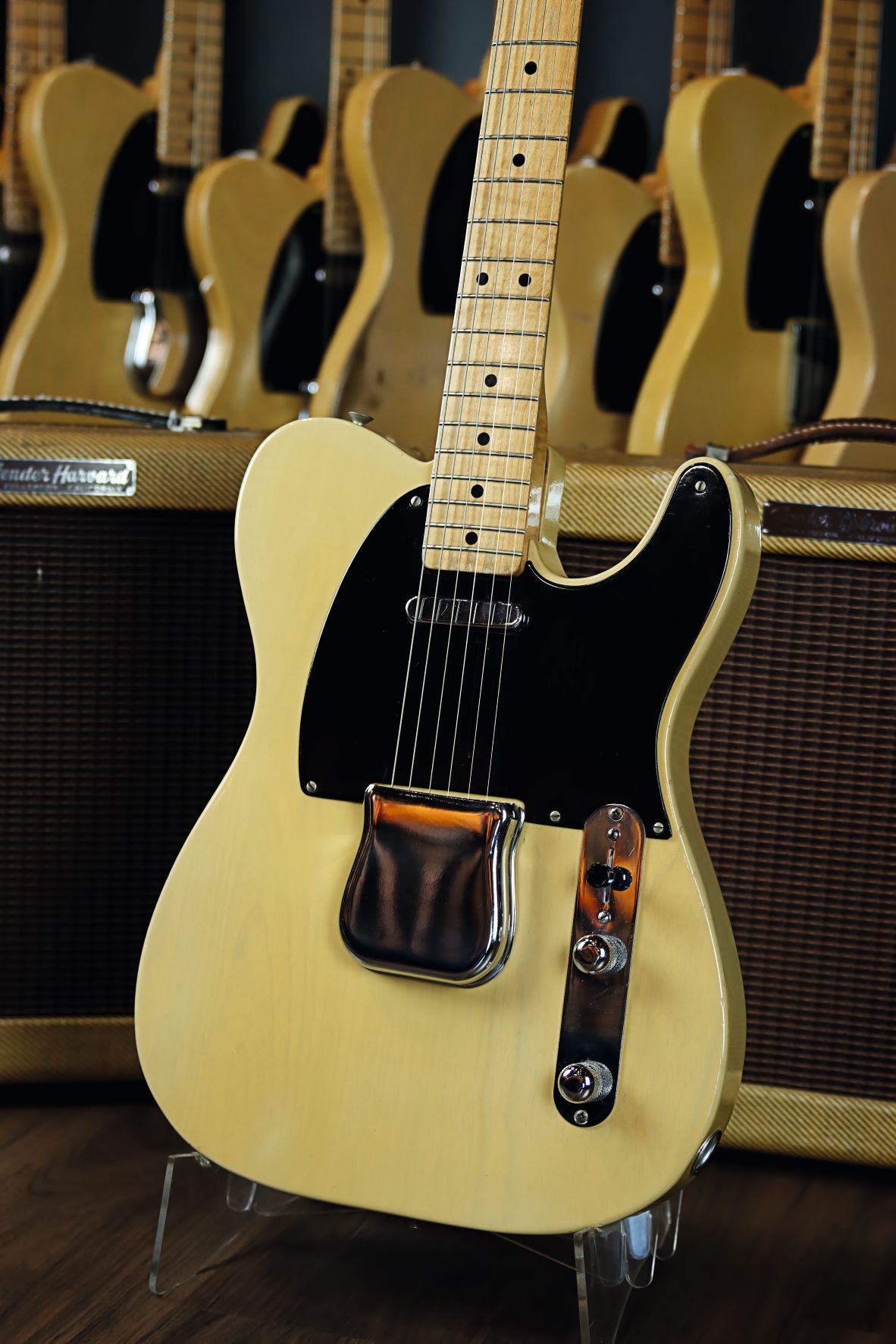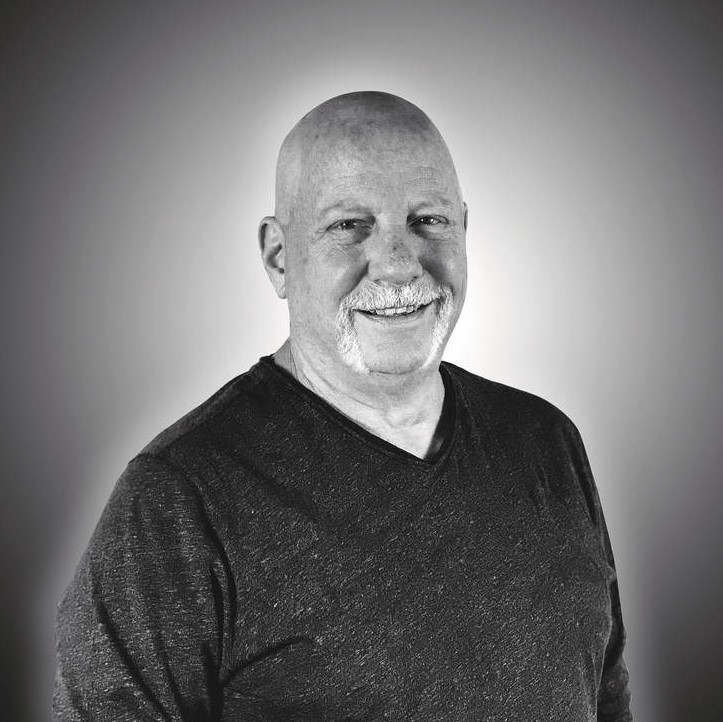When Is a Telecaster Not a Telecaster? When It’s a Dual-Pickup Esquire
Vintage guitar veteran David Davidson of Well Strung Guitars treats us to an eyeful with this pristine 1952 Fender dual-pickup Blackguard Esquire.

This is a 1952 Fender Esquire that is factory-fitted with two pickups. Interestingly enough, ‘Esquire’ is not indicated on the back of the neck heel or on the body; usually, it would say “esq” in either of those places.
I’ve seen eight or so double-pickup Esquires from this era and this is the only one I’ve ever seen that isn’t marked as one. It doesn’t say it on the neck or the body, so my feeling on this particular guitar is that there are two possibilities: one, somebody bought an Esquire and ordered the $15 [neck] pickup option; or, two, the guitar went through [production] and was somehow decaled incorrectly.
I tend to believe that this guitar was decaled incorrectly
David Davidson
It could have gone either way, but I tend to believe that this guitar was decaled incorrectly. Only because I strongly feel it would have been marked as an Esquire on the body and on the neck heel – not where the date is written [on the end] but on the back part of the neck where it mates with the body in the pocket.

This guitar is pristine. I mean, it’s in the top two per cent of any I’ve ever seen. I think it was played a little bit but not that much. Otherwise, it was kept away in the case. The hardware is in great condition – it’s so shiny, undisturbed, unpitted and unlined you would think they made it yesterday.
There’s a teeny bit of wear on the pickguard about the size of a half-dollar coin, and I think that’s just from normal pick work. To me, it looks like a ‘three-lesson guitar’.
It’s an anomaly
David Davidson
There’s a little bit of a flame on the neck, and the back of the body is mint. It’s really very beautiful, as is the original thermometer case. It’s a fantastic instrument.
It has a one-piece ash body, which is pretty cool, and it plays very well, too. I mean the frets have zero wear on them. It is truly an under-the-bed kind of instrument. And it’s an anomaly. You know, I like those types of electric guitars – I like guitars you can’t see anywhere else.
All the latest guitar news, interviews, lessons, reviews, deals and more, direct to your inbox!

Most people would think this guitar looks strange, but we obviously black-lit the decal and did all of our normal in-depth analysis to verify its originality. And it’s pristine. There’s absolutely no reason to think anything’s been changed whatsoever.
Of course, we really went through the guitar very carefully, and I’m pleased to say that what we have here is an amazing example of an original two-pickup Blackguard Esquire. It’s pretty remarkable.
What we have here is an amazing example of an original two-pickup Blackguard Esquire
David Davidson
Before the Broadcaster came out [in 1950] there was the Esquire [released earlier in 1950] and that could be ordered with either one or two pickups. The two-pickup model was referred to as a Dual Esquire.
People continued to order an additional pickup for their Esquire guitars, even after the Broadcaster became available. I think the charge was $15 including installation.

The factory would basically convert the single-pickup Esquire into a Dual Esquire. But the work was done at Fender before the guitar was delivered new, so it’s not like customers sent the guitars back afterwards to be changed.
Once the Broadcaster came along, that kind of goes away, except for some rare examples where people had already ordered a second pickup on their Esquire. Usually, people would place an order through their local music store.
The solder is original to the guitar, no pickup was added and, again, it’s not marked ‘esq’. That’s important to note because, to my mind, that’s pretty much defining that this guitar should have been a Telecaster.

Everything was factory-fitted at Fender, including the regular two-pickup ’guard; it hasn’t been cut to fit a second pickup later on.
You sometimes see that, but you can always tell when an Esquire pickguard has been cut into a Telecaster-style pickguard.
I’ve seen plenty of clean guitars that don’t play well, but a guitar that’s very dirty almost always plays well
David Davidson
This is just a standard black Tele ’guard, and the wiring is just the same as a Telecaster of the era where it’s no longer a blend knob – it has a regular tone knob.
Even when you work the controls it feels brand-new as they’re not dirty or crusty. It was kept in perfect climate conditions.

It plays well, which is an interesting thing when guitars aren’t used very much. I’ve seen plenty of clean guitars that don’t play well, but a guitar that’s very dirty almost always plays well.
You have a 50:50 shot on a clean guitar – and this one also happens to play good!
It’s a pretty neat piece. It always amazes me when I see guitars like this. You don’t see things like this every day. And that’s exactly the sort of thing we love to do at Well Strung Guitars.

Vintage guitar veteran David Davidson owns Well Strung Guitars in Farmingdale, New York.
info@wellstrungguitars.com / 001 (516) 221-0563
- Upgrade your Tele tone with the best Telecaster pickups
Rod Brakes is a music journalist with an expertise in guitars. Having spent many years at the coalface as a guitar dealer and tech, Rod's more recent work as a writer covering artists, industry pros and gear includes contributions for leading publications and websites such as Guitarist, Total Guitar, Guitar World, Guitar Player and MusicRadar in addition to specialist music books, blogs and social media. He is also a lifelong musician.

